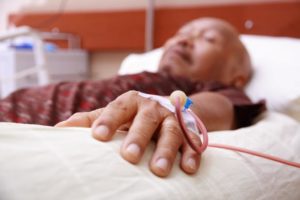The Cures Act opens the door for previously ineligible end-stage renal disease (ESRD) patients to enroll in a Medicare Advantage (MA) plan starting this fall. CMS expects an increase in the number of ESRD MA plan beneficiaries by 63%. ESRD patients are highly-complex and high-cost to care for and treat. MA plans still have time to get ready.
End-Stage Renal Disease (ESRD) and Medicare: A Little History
 In 1972 Congress took the unprecedented step of passing legislation allowing people living with ESRD to enroll in Medicare. This was a watershed moment: the first time individuals with a specific medical condition were given the opportunity to enroll in Medicare regardless of age. Since then, enhancements have been made to improve care and better manage costs associated with ESRD. In 2016, Congress took another bold step forward on behalf of ESRD patients by passing the 21st Century Cures Act, a key provision of which opens the door for approximately 426,000 previously ineligible ESRD patients to choose a MA plan starting this fall, with coverage effective January 1, 2021.
In 1972 Congress took the unprecedented step of passing legislation allowing people living with ESRD to enroll in Medicare. This was a watershed moment: the first time individuals with a specific medical condition were given the opportunity to enroll in Medicare regardless of age. Since then, enhancements have been made to improve care and better manage costs associated with ESRD. In 2016, Congress took another bold step forward on behalf of ESRD patients by passing the 21st Century Cures Act, a key provision of which opens the door for approximately 426,000 previously ineligible ESRD patients to choose a MA plan starting this fall, with coverage effective January 1, 2021.
The Challenges Facing MA Plans
For people living with ESRD, an expensive, irreversible, life changing chronic condition, which requires dialysis or a kidney transplant to survive, the Cures Act significantly and meaningfully enhances their healthcare coverage options.
For MA plans the change in eligibility poses significant challenges, as ESRD is a highly-complex, high-cost condition to treat. Specifically,
- People living with ESRD typically have comorbid conditions, such as diabetes and hypertension, and require specialized, multi-disciplinary care and an extensive medication regimen to remain as healthy as possible.
- In the United States, there remains a reliance on in-center dialysis treatment when in-home dialysis is as safe and equally effective. In fact, only 12% of ESRD patients receive dialysis treatment at home, even though in-home dialysis has been shown to improve a patient’s quality of life, extend kidney function, and lower the cost of care. (To learn more about in-home dialysis read: In-home Dialysis: Better Outcomes, Patient Experience and Costs)
- ESRD patients are more vulnerable to avoidable adverse medical events that drive them to the ER or into the hospital at a considerable cost to the healthcare system and to the detriment of the patients’ emotional well-being.
According to the U.S. Renal Data System’s 2019 Annual Report, there were 746,557 people living with ESRD in 2017, a number which grows annually. Medicare spent $36 billion to treat ESRD beneficiaries, up $1 billion from the year prior . With a cost per patient per plan year ranging from $80,000 to $100,000, an ESRD patient is more than twice as costly to care for than a CKD patient with diabetes and heart failure, and five times more costly than a patient with CKD only.
Adding to this risk is the growing number of COVID-19 survivors who developed Acute Kidney Injury (AKI) while hospitalized and required emergency dialysis to survive. Many may remain on dialysis post-discharge. While the long-term effects of the virus remain unknown, it is well established that AKI increases the risk of developing kidney disease, the precursor to ESRD. In fact 31% of people who develop AKI while hospitalized are diagnosed with kidney disease within a year of being discharged.
This is just the tip of the iceberg. There are over 37 million people in the U.S. living with chronic kidney disease (CKD), the precursor to ESRD. The vast majority, 9 out of 10, live unaware of their condition until it progresses to ESRD with many “crashing” into dialysis when kidney failure drives them to the ER.
The Path Forward
With open enrollment just four months away, there is still time for MA plans to prepare for the Cures Act, and Healthmap Solutions offers a “Cures Act How-to Guide” to help plans get ready.
Our Population Health Management solutions, and Kidney Health Management program specifically, support healthcare providers with actionable, clinically-proven data, empower patients with the information and support they need to be fully engaged in their healthcare, and deliver improvements to care, outcomes, patient experience and cost for health plans. Learn more at healthmapsolutions.com
To stay current on issues and breaking news related to kidney health management and population health management, follow us on LinkedIn, Facebook and on Twitter @healthmapcare, and sign up for direct alerts from Healthmap Solutions.
--
[1] United States Renal Data System. “2019 USRDS annual data report: Epidemiology of kidney disease in the United States.” National Institutes of Health, National Institutes of Diabetes and Digestive Kidney Diseases, Bethesda, MS, 2019. https://www.usrds.org/adr.aspx
[2] Ibid.
[3] Centers for Disease Control. https://www.cdc.gov/kidneydisease/pdf/2019_National-Chronic-Kidney-Disease-Fact-Sheet.pdf